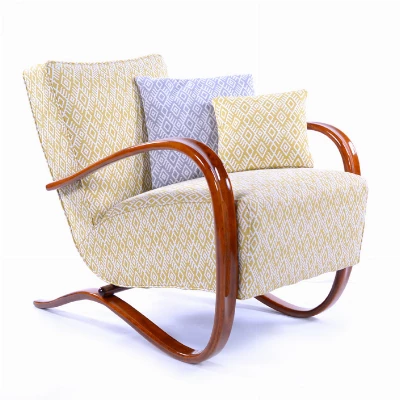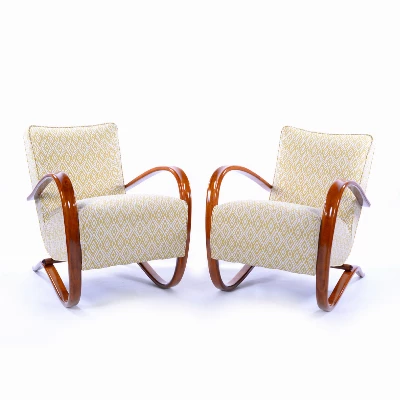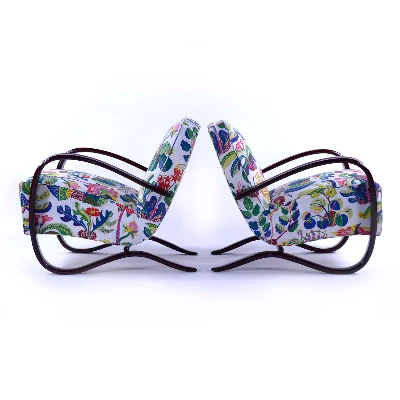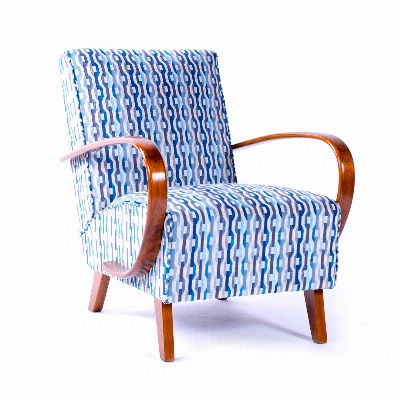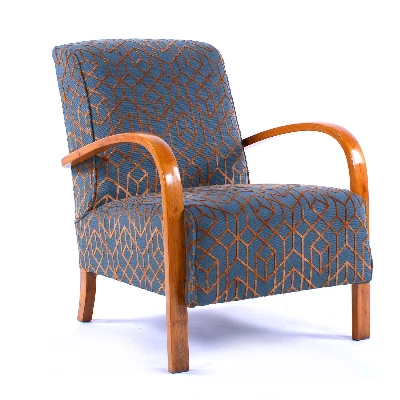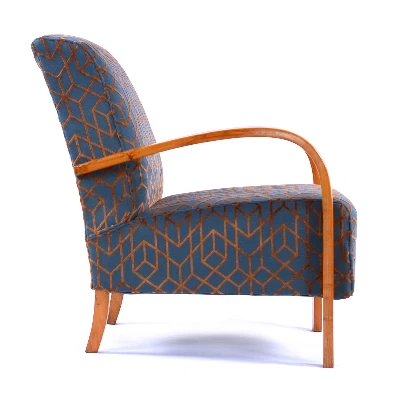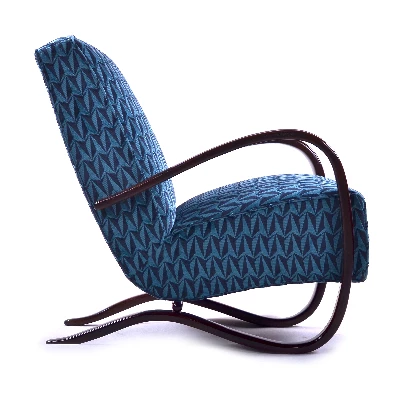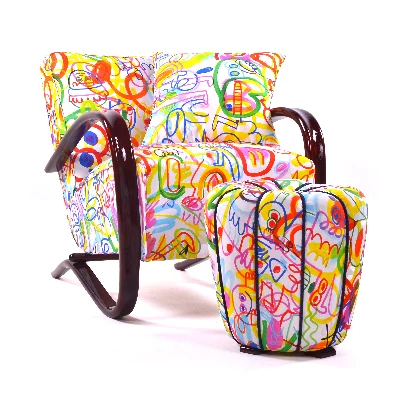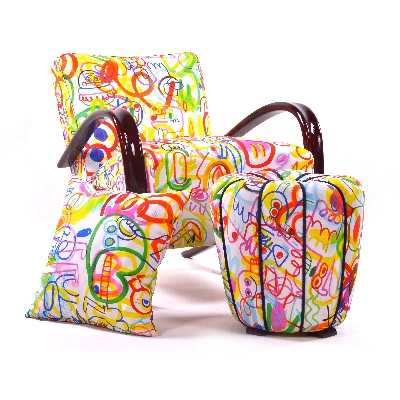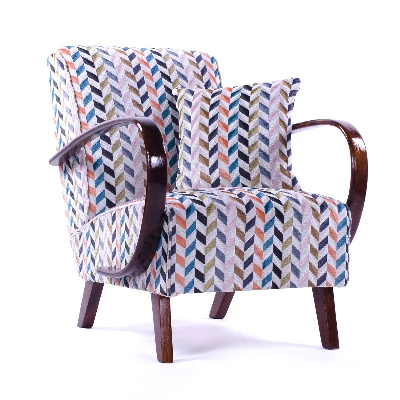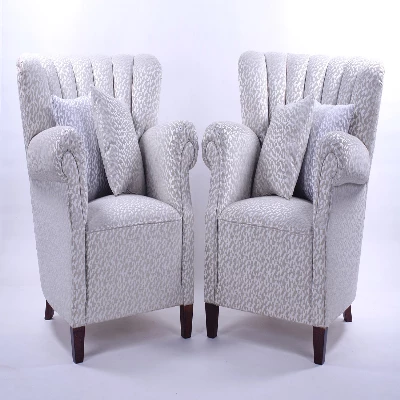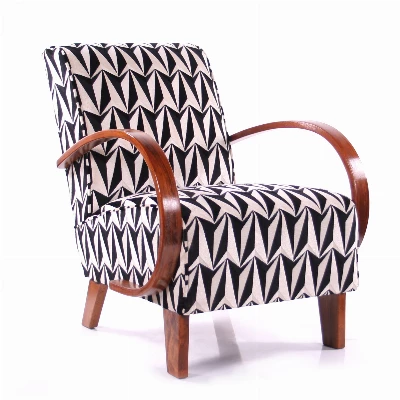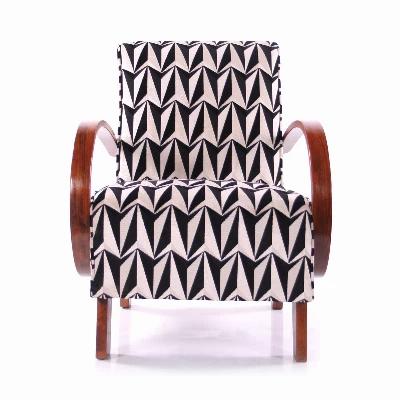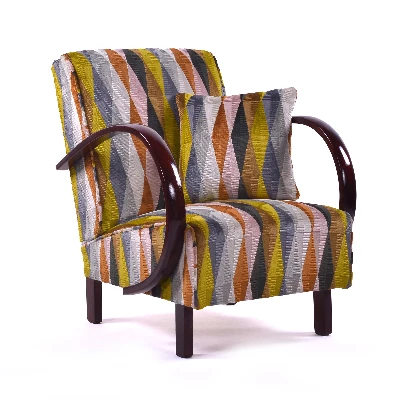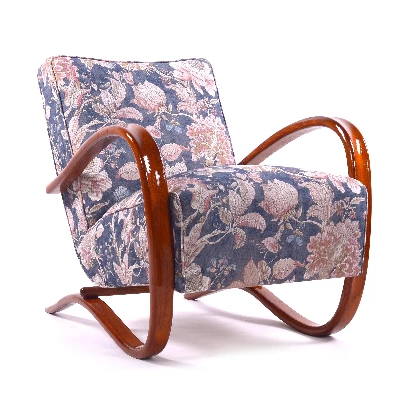JINDŘICH HALABALA
1903-1978
Jindřich Halabala was born on 24 May 1903 in Koryčany into the family of cabinetmaker Štěpán Halabala, whose trade he learned in the family firm between 1918 and 1920. He then entered the State Czechoslovak Vocational School for Wood Processing in Valašské Meziříčí, from which he graduated two years later. After school he started his apprenticeship at United UP plants where he met their founder, Jan Vaněk. In 1922 he also began studying architecture at the School of Applied Arts in Prague, specialising in furniture and interior design under prof. Pavel Janák. He graduated in 1926. In the same year he already created his first furniture and carpet designs. In 1927 he was briefly employed in Bohumil Hübschmann's studio in Prague before finally joining the United UP Works in 1928 as a manager of the Prague shop in the Lucerna Palace. In 1927 Jindřich Halabala married Pavla Sekerková, with whom he had two sons; Jindra born in 1929 and Ivan born in 1935. In 1930 he was transferred to the Brno headquarters of the United UP plants as head of the studio, where he worked in various positions (proxy, director) until 1946 and thus substantially contributed to the complex concept of production, promotion and sales. He later became interested in passing on his knowledge to the next generation, and between 1951 and 1954 he lectured at the Faculty of Forestry and Wood Engineering at the University of Applied Sciences in Košice. In 1954 he was appointed an extraordinary (and a year later a full) professor and began his long-lasting work at the Faculty of Forestry at the University of Forestry and Wood Technology in Zvolen, where he founded and headed the Scientific Research Institute. He worked there until 1970 when he retired.
Halabala's work is considered a link between the innovative Czech cubism of 1910, art deco of the early 1920s and European modern art after World War II. His commercially successful designs were heavily based on Bauhaus design. Halabala designed a variety of furniture including chairs, tables, sideboards, chests of drawers, flower stands, coffee tables and lamps. His legendary H 79 chairs with frames made of bent steel tubes and his H 269 armchair were especially popular.
Halabala products in our offer

meticulous hand restoration, preserving the spirit of the item and using the finest materials
Each piece of furniture has its own history, sometimes very complex and dramatic, sometimes peaceful. But never ordinary. At the time of creation it was already distinctive and high-quality furniture. The owners knew it. We move its story further, sometimes just by pushing it along, sometimes breathing new life into it. It is only up to you how its story continues.

